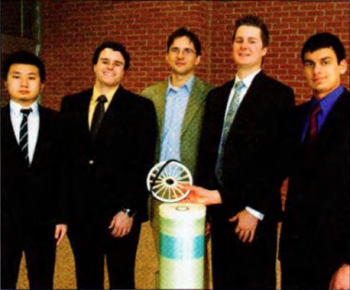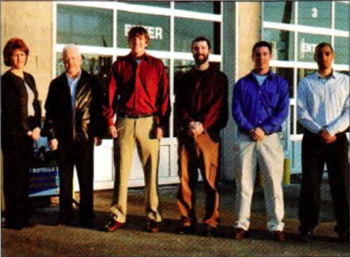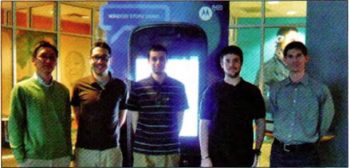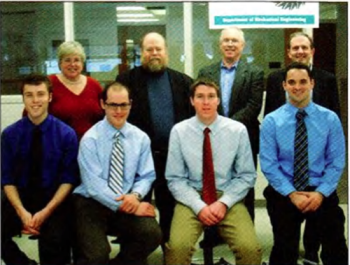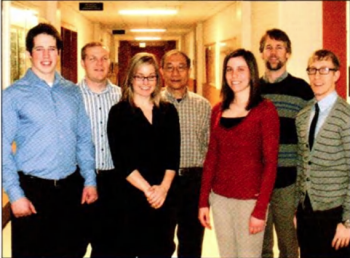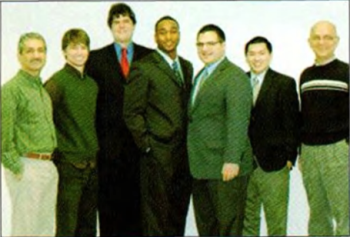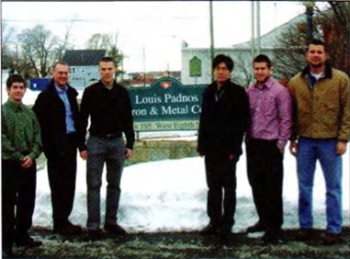Mechanical Engineering
Projects
One goal of the MSU Mechanical Engineering Program is to educate engineers who are prepared to lead, create, and innovate as their professional or graduate careers evolve. The Mechanical Engineering Design Program is the key element of the curriculum that supports this goal. There are five required design courses in the program which provide our students with eight hands-on, team-based, ‘design, test and build’ projects, and numerous opportunities to practice and refine their written, oral, poster, and video presentation skills. The Design Program in Mechanical Engineering has attracted national recognition on many occasions and helps to distinguish the ME program as one of the best in the country.
For information on becoming a project sponsor, please contact Mike Colucci.
The following are the project sponsors and projects for Spring 2010:
Dow Chemical Company: Brine Seal Application for Reverse Osmosis Elements
 Dow Water and Process Solutions (DW&PS) leads the market in producing reverse osmosis membrane elements for water and fluid processing. A subsidiary ofThe Dow Chemical Company formerly known as FilmTcc Corporation and founded in 1981, DW&PS is located in Edina, Minnesota, 15 minutes away from the heart of Minneapolis. To uphold Dow’s promise to improve consideration of the human element, DW&PS produces filters to serve a wide variety of industrial, municipal, commercial, and home drinking water applications.
Dow Water and Process Solutions (DW&PS) leads the market in producing reverse osmosis membrane elements for water and fluid processing. A subsidiary ofThe Dow Chemical Company formerly known as FilmTcc Corporation and founded in 1981, DW&PS is located in Edina, Minnesota, 15 minutes away from the heart of Minneapolis. To uphold Dow’s promise to improve consideration of the human element, DW&PS produces filters to serve a wide variety of industrial, municipal, commercial, and home drinking water applications.
Product quality is essential and cannot be achieved without an efficient and healthy workforce; Dow holds safety as a top priority. A key aspect of the eight-inch FILMTECTM reverse osmosis (RO) membrane element, a popular Dow product, is the strategic placement of brine seals to force the stream water through the membrane and prevent leaks. Currently, application of this seal is conducted with improper hand tools and has ergonomic and safety hazards, such as a risk of repetitive motion injuries to the wrist.
In order to abide by Dow’s safety standards, the MSU design team has been challenged to develop an automated or semi-automated tool to assist operators with the application of the brine seal without the creation of new safety and ergonomic hazards. The tool should provide a benefit to the user and improve the current working conditions. At the end of the project, the tool will be integrated into DW&PS’ manufacturing process; it has the ability to impact all of Dow’s industrial reverse osmosis product lines by creating a safer work environment.
An Entrepreneurial Project for Two Fourteen, LLC: Motorcycle Oil Change Adapter
 One of the main frustrations that motorcycle enthusiasts have with owning motorcycles is the inefficient and costly oil and filter changing process. If owners are not able to change the oil themselves, they must take their bikes to a motorcycle dealership or specialty shop. These shops require an appointment to be made and the bike to be left at the shop for hours or days. Additionally, the process is expensive compared to changing the oil in cars and trucks where a typical oil change costs between $80 and $120.
One of the main frustrations that motorcycle enthusiasts have with owning motorcycles is the inefficient and costly oil and filter changing process. If owners are not able to change the oil themselves, they must take their bikes to a motorcycle dealership or specialty shop. These shops require an appointment to be made and the bike to be left at the shop for hours or days. Additionally, the process is expensive compared to changing the oil in cars and trucks where a typical oil change costs between $80 and $120.
After experiencing this process numerous times, avid motorcycle riders and working professionals Jim and Denise Kelly began thinking of alternative ways to get their motorcycles’oil and filter changed. The simplest solution was to create a way for quick lube and oil change-plus facilities to service motorcycles. With this idea in mind, the Kellys formed their company, Two Fourteen, LLC, filed for a patent, and began to research ways to design and build their product. This ME 481 design team developed a refined prototype of this new system.
The team has built an adapter that allows quick oil change stations to service motorcycles over a pit or on a hoist. The design will have a minimal impact on the daily operation of the service stations’ business and operating procedures. Itissimpletooperateandeasytomaneuverinandoutofitsoperating position. The device has an appropriate factor of safety to prevent injury to the customer or damage to the motorcycle under the most extreme possible loading conditions. Finite element analysis and computer aided optimization were used to ensure that the device meets safety standards while minimizing its weight for ease of maneuverability.
A Shell Oil Company Children’s Humanitarian Project: Mobile Sit-to-Stand Transfer Device for Heartwood School
 Heartwood School is an educational institution that has a student population between the ages of two and twenty-six with serious physical and cognitive disabilities. Heartwood utilizes the MOVE (Mobility Opportunities Via Education) international curriculum. The objective is to improve functional mobility skills that enable individuals with severe disabilities to better direct their lives by improving motor skills.
Heartwood School is an educational institution that has a student population between the ages of two and twenty-six with serious physical and cognitive disabilities. Heartwood utilizes the MOVE (Mobility Opportunities Via Education) international curriculum. The objective is to improve functional mobility skills that enable individuals with severe disabilities to better direct their lives by improving motor skills.
At Heartwood School it is necessary to transfer students throughout the day into a variety of positions including those that allow access to therapeutic equipment as required by the MOVE curriculum. A serious obstacle for the students in this endeavor is their inability to easily transition from a seated position to a standing position and bear weight on their lower extremities during such a transfer.
This project addressed the problem. The goal was to design, build, and test a mobile sit-to-stand device for Hcartwood School. The purpose of the mobile sit-to-stand device is to help the staff increase the independence and skill level of each student to his or her greatest potential consistent with the mission of the school. The use of the device is intended to be a therapeutic tool in addition to assisting the students in transitioning from a seated to a standing position. The device presents an element of safety and support during the transfer while also providing the student with positive feedback during the process as a motivational incentive. The feedback incorporates both visual and auditory stimulation when the student actively engages the device.
A General Motors Humanitarian Project: Steering Design of the Push Pull Recumbent Cycle for Mid Michigan Medical
 The MidMichigan Medical Center has been recognized as a leader in providing state-of-the art healthcare, specializing in cancer, orthopedics, cardiovascular service, neuroscience, cosmetic surgery, diabetes, maternity, rehabilitation, and wellness. The number of advanced technologies achieved by MidMichigan Medical Center is enormous. Deep brain stimulation, gamma knife perfusion, and SPY imaging system are a few of the technologies that make them such a renowned medical center.
The MidMichigan Medical Center has been recognized as a leader in providing state-of-the art healthcare, specializing in cancer, orthopedics, cardiovascular service, neuroscience, cosmetic surgery, diabetes, maternity, rehabilitation, and wellness. The number of advanced technologies achieved by MidMichigan Medical Center is enormous. Deep brain stimulation, gamma knife perfusion, and SPY imaging system are a few of the technologies that make them such a renowned medical center.
Currently, the rehabilitation center in the MidMichigan Medical Center uses a Nu-step exercise bike for cardiovascular activity. This bike uses motion from both amis and legs simultaneously to strengthen patients’ muscles and build their endurance.
The exercise machine used now is very effective for the physical rehabilitation of the patients. Our project will give the patients the same experience but allow them to comfortably exercise arms and legs while riding around outside or inside the hospital instead of remaining stationary. The recumbent cycle will make therapy more enjoyable and exciting. Our team would like to apply many of the same designs and elements found in the Nu-Step machine toward the formation of our recumbent cycle.
Throughout the design of our product, it was especially important to keep in mind the needs of the patients, while remaining cost efficient, durable, and safe. This was done by applying an electric steering system, safety mechanisms, and adjustable seat/handles to the design. Initially, the project goal was strictly to improve the steering system; but upon examination, we concluded that additional renovations were required to deliver an acceptable product. Using extensive research and analysis from the knowledge gained through the MSU College of Engineering Department, we were able to produce a recumbent cycle that exhibited these features.
Motorola: Mobile Device with a Removable Stereo Wireless Headset
 Motorola has been a leading developer in communications technology for people, business, and governments since 1928. Motorola has met the demand for greater convergence in communication technologies through their history of excellence in innovation. Motorola’s focus on new mobile devices includes maximizing functionality and ease o f use through truly new and unique developments.
Motorola has been a leading developer in communications technology for people, business, and governments since 1928. Motorola has met the demand for greater convergence in communication technologies through their history of excellence in innovation. Motorola’s focus on new mobile devices includes maximizing functionality and ease o f use through truly new and unique developments.
Multimedia applications such as music, games, internet, and video have all become common functions of mobile devices. The task presented was to design and demonstrate an all-in-one stereo sound hands-free solution for managing such media with a mobile device. To accomplish this, a Bluetooth stereo headset, which integrates seamlessly with a mobile phone, was proposed. Currently, no product exists that solves this problem.
The difficulty of such a proposal is in trying to balance every design decision’s impact on the end product. Factors such as size and ease of use or functionality and innovation may directly conflict for a wide variety of concepts. Balancing these factors and developing a product that makes the user wonder why it did not already exist is the best measure of success. With few design restrictions in place the challenge was to find a direction worth pursuing; minimizing size and weight without sacrificing ease of use was paramount.
A specified set of design parameters was developed and adhered to such that the needs of Motorola and its customers were met. Surveys were then conducted to analyze market demographics and validate those design parameters. Prototypes were modeled using computer assisted design, manufactured through stereo lithography techniques, and critically analyzed for refinement. This was repeated multiple times to deliver a final conceptual product.
Whirlpool Corporation: Controlled Rotation Spray System for the Middle Arm of a Dishwasher
 Whirlpool Corporation is a leader of the global home appliance industry whose appliances are marketed in nearly every country around the world. It manufactures appliances across all major categories, including fabric care, cooking, refrigeration, dishwashers, countertop appliances, garage organization, and water filtration. It markets some of the world’s most recognized appliance brands, including Whirlpool. Maytag. KitchenAid, Jenn-Air, Amana, Bauknecht, Brastemp. and Consul. Its global and North American headquarters are located in Benton Harbor, Michigan.
Whirlpool Corporation is a leader of the global home appliance industry whose appliances are marketed in nearly every country around the world. It manufactures appliances across all major categories, including fabric care, cooking, refrigeration, dishwashers, countertop appliances, garage organization, and water filtration. It markets some of the world’s most recognized appliance brands, including Whirlpool. Maytag. KitchenAid, Jenn-Air, Amana, Bauknecht, Brastemp. and Consul. Its global and North American headquarters are located in Benton Harbor, Michigan.
Traditionally, the middle arm of a Whirlpool dishwasher is powered by the pressure and flow of water spraying out of the nozzles of the spray arm. However, pressure loss and cleaning inefficiencies result from the uncontrolled spray generated from that design. The goal of this project is to develop a device to mechanically control the middle arm of a dishwasher for better cleaning. The new design must be able to change the speed of rotation on the fly and rotate in both directions: clockwise and counterclockwise. This control o f speed and direction should translate to better cleaning in the dishwasher, more efficient spray systems, reduced cycle time, as well as allowing new spray system features.
The most difficult elements of this project include finding a method to transfer power to the middle spray arm, making the system work in unison with the adjustable upper baskets that can move up and down, and designing a system with a negligible impact on capacity. Finally, the group could not exceed a budget of SI000 in project costs. Throughout the semester the team organized, developed, and analyzed the optimal design to maximize the efficiency of water consumption during the average cycle of a Whirlpool dishwasher. The design will be manufactured and implemented into future Whirlpool designs.
Whirlpool Corporation: Adjustable Blade Assembly
 Whirlpool Corporation is the world’s leading manufacturer and marketer ofmajor home appliances. With the acquisition of KitchenAid® in 1986, Whirlpool expanded the selection of its home appliances even further.
Whirlpool Corporation is the world’s leading manufacturer and marketer ofmajor home appliances. With the acquisition of KitchenAid® in 1986, Whirlpool expanded the selection of its home appliances even further.
The next generation of food processors in the market utilizes an adjustable slicing blade design, allowing for different slice thicknesses with only one blade assembly. KitchenAid® does not currently utilize the adjustable blade assembly concept, as multiple blades are used to achieve different slice thicknesses with higher performance ratings. However, due to a commitment to innovation, KitchenAid® wants to improve its current product to meet market needs while still maintaining a high level of performance and quality.
Current KitchenAid® food processors come standard with 2 slicing blade assemblies, a 2 mm and a 4 mm blade cut. In order for the consumer to achieve different thicknesses, additional blade assemblies must be purchased from the manufacturer.
The design team was assigned to develop an adjustable slicing blade assembly that would be compatible with the current KitchenAid® food processor. The final design should eliminate the need for extra blade assemblies by allowing the customer to manually adjust one blade assembly to the desired height. This next generation of food processors will allow KitchenAid® to have a more competitive product by reducing cost and increasing customer satisfaction.
Alternative ways of adjusting the height of the blade assembly were discussed in order to design a prototype. Computer Aided Drawings and Finite Element Analysis were conducted to optimize the chosen design. The prototype was then built by Whirlpool’s prototyping lab and was then tested to ensure that performance, quality, and safety targets were met.
Whirlpool Corporation: Thermal Storage System Design for a Refrigerator

Whirlpool Corporation is a global manufacturer of home appliances and a leading proponent for green engineering. Whirlpool Corporation is currently developing a product line to integrate the consumer with the national “smart-grid.” These “smart- appliances” modify their behavior to suit variable electrical rates by better managing energy use during high-demand periods. The smart-appliance will receive information from the smart-grid and will optimize its energy usage accordingly.
This shift in power usage may cause problems for appliances such as refrigeration units that require steady operating temperatures. Offsetting the times in which the energy is drawn for cooling may cause harm to the food products within the unit due to thermal leakage through the insulation and regular opening of the refrigerator door. This creates a need to store energy during off-peak times for use during periods with high energy costs. One solution is to implement phase change materials (PCMs) into current refrigeration designs.
PCMs can be used to store and release energy when the material changes phases; these materials have the ability to absorb and release large amounts of heat at a steady temperature. The PCMs will store the cooling energy generated by the refrigeration unit during off-peak periods and then release this energy during high demand periods.
The Motorola Foundation Youth in Energy and Environment Humanitarian Project: Geothermal Energy Demonstrator for Woodcreek Elementary
 In recent years. The Motorola Foundation has strived to reach out and educate youth on topics such as environmental awareness and energy efficiency. This spring. The Motorola Foundation teamed with the MSU College of Engineering to develop this semester’s Motorola Youth in Energy and Environment Humanitarian Project. Efforts were aimed towards educating the fifth graders ofLansing Public Schools’Woodcreek Elementary. The goal is to teach the basics of the engineering design method; the engineering profession; alternative energy; and, most specifically, geothermal energy.
In recent years. The Motorola Foundation has strived to reach out and educate youth on topics such as environmental awareness and energy efficiency. This spring. The Motorola Foundation teamed with the MSU College of Engineering to develop this semester’s Motorola Youth in Energy and Environment Humanitarian Project. Efforts were aimed towards educating the fifth graders ofLansing Public Schools’Woodcreek Elementary. The goal is to teach the basics of the engineering design method; the engineering profession; alternative energy; and, most specifically, geothermal energy.
In order to create interest in the students, the demonstrator’s design was chosen with a fifth grader’s interests and tendencies in mind. It was understood that the demonstrator had to be extremely visual and interactive, while at the same time, properly enclosed to ensure the safety of the students. In the end, the demonstrator will be a mainstay in the classroom for years to come.
Throughout the design and production of the geothermal demonstrator, a series of hands-on activities and presentations were given by the Woodcreek Team to the fifth grade students, engaging them in each step of the process. Those interactions were aimed at exciting the fifth graders about learning details on the design method, the engineering profession, alternative energy, and finally, geothermal energy.
A Humanitarian Project for Developing Countries for the Appropriate Technology Collaborative: Battery for Alternative Energy in the Developing World
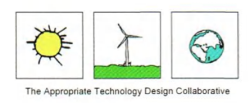 Many communities in the developing world do not have daily access to electricity. Providing renewable energy systems can have a large impact on the citizens of a developing country. A few extra hours of light each evening will provide time for income generating domestic work and allow children more time for school assignments.
Many communities in the developing world do not have daily access to electricity. Providing renewable energy systems can have a large impact on the citizens of a developing country. A few extra hours of light each evening will provide time for income generating domestic work and allow children more time for school assignments.
The Appropriate Technology Collaborative (ATC) is a 501 (c)(3) not-for- profit organization whose mission is to design, develop, demonstrate and distribute appropriate technological solutions for meeting the basic human needs of low income people in the developing world. The designs created by the collaborative create jobs and provide affordable products that improve the quality of life in developing countries.
The Appropriate Technology Collaborative Student Team has been given the task of choosing/designing a household energy storage system. To do this the Student Team will design a battery and create a testing device to compare their design against commercially available batteries. The MSU battery’ will be designed specifically for use in low income countries. The battery’ will be charged by solar panels to provide power for household lighting and charging cell phone.
The team will document the cost, longevity, toxicity and local manufacturability of batteries surveyed. The final Student Team report will be distributed freely online to anyone who wishes to design a home scale energy storage system.
The Department of Mechanical Engineering at MSU: A Miniature Test Rig for Measuring Wind Power
 As the need for renewable energy grows, so does the demand and size of commercial-scale wind turbines. Many commercial-scale wind turbines are plagued with high maintenance costs, which can often be attributed to gearbox-bearing failures; and in most cases, the failures occur before the designed life o f the bearing. The conclusion drawn from this information is simply that the failure mechanisms and loadings have yet to be thoroughly explored and understood to the extent required for proper incorporation into wind turbine system designs.
As the need for renewable energy grows, so does the demand and size of commercial-scale wind turbines. Many commercial-scale wind turbines are plagued with high maintenance costs, which can often be attributed to gearbox-bearing failures; and in most cases, the failures occur before the designed life o f the bearing. The conclusion drawn from this information is simply that the failure mechanisms and loadings have yet to be thoroughly explored and understood to the extent required for proper incorporation into wind turbine system designs.
To further the understanding of these failure mechanisms, the Department of Mechanical Engineering at Michigan State University is seeking to establish the experimental capabilities to perform a dynamical study of wind turbines. The main objective of this project was to design an experimental test setup of a wind turbine to be used for the dynamical study. Through the course of the semester, an experimental test method was selected and a setup designed, established, and used to generate wind turbine power curves. The experimental test method uses controlled velocity testing to generate and simultaneously record data pertaining to upstream and downstream wind speed, blade tip speed, and generator power output. The experimental test setup and procedure were w’ell documented to allow for comparison testing in future research. The test setup was also designed to allow for upgrades and modifications to accommodate additional research on alternate parameters.
The experimental test set-up and procedure will serve as a firm foundation for future wind turbine research in the Department of Mechanical Engineering at Michigan State University. Ideally, this project will eventually contribute to lower maintenance costs and thus more economically viable wind turbine systems.
The Department of Mechanical Engineering at MSU: Design and Manufacturing of a Modular Small Wind Turbine System and its Blades
 Michigan State University is researching small modular wind turbines that can operate at low wind speeds. The goal of this group is to research wind-turbineblade characteristics to optimize efficiency in small-scale wind turbines. The wind- turbine studies are targeting those that could operate at wind speeds of about three meters per second. The team will purchase a small wind turbine and conduct research in a wind tunnel. The effects of many different blade types, angles, sizes, and number of blades will be tested for overall power and efficiency. The collected data will be compared against the results from a program called FAST (Fatigue, Aerodynamics, Structures, and Turbulence).
Michigan State University is researching small modular wind turbines that can operate at low wind speeds. The goal of this group is to research wind-turbineblade characteristics to optimize efficiency in small-scale wind turbines. The wind- turbine studies are targeting those that could operate at wind speeds of about three meters per second. The team will purchase a small wind turbine and conduct research in a wind tunnel. The effects of many different blade types, angles, sizes, and number of blades will be tested for overall power and efficiency. The collected data will be compared against the results from a program called FAST (Fatigue, Aerodynamics, Structures, and Turbulence).
With the results from testing in mind, the team will begin to design a new’ set of optimized blades. Once the best design is determined, the blades will be modeled. If possible, the team will move to the fabrication stage and produce the modeled blades.
The Department of Mechanical Engineering at MSU: Design and Manufacturing of a Continuous Variable Transmission System for Variable Wind Conditions
 Increases in the efficiencies of alternative energy conversion systems are vitally important for their success as they attempt to become competitive with traditional sources of fossil fuel based power. It has been proposed that the use of a Continuously Variable Transmission (CVT) in the powertrain design for a wind turbine could increase system efficiency, thereby lowering the Cost of Energy (COE). As part of a continued effort by Michigan State University and the College of Engineering to emphasize sustainability and environmental stewardship, a powertrain design using the NuVinci CVT was developed.
Increases in the efficiencies of alternative energy conversion systems are vitally important for their success as they attempt to become competitive with traditional sources of fossil fuel based power. It has been proposed that the use of a Continuously Variable Transmission (CVT) in the powertrain design for a wind turbine could increase system efficiency, thereby lowering the Cost of Energy (COE). As part of a continued effort by Michigan State University and the College of Engineering to emphasize sustainability and environmental stewardship, a powertrain design using the NuVinci CVT was developed.
There are two major advantages to the use of a CVT in the powertrain of a wind turbine. First, variable-speed winds can be more efficiently harnessed. The CVT has the ability to simultaneously maintain both the appropriate tip speed ratio of the rotor for maximum aerodynamic efficiency and the output shaft speed to the generator. Precise control of the generator shaft speed has the potential to eliminate expensive power electronics currently being used as a frequency controller. The second major advantage of a CVT is its ability to handle large wind gusts or high-speed winds without compromising performance or damaging the system components.
Research was conducted to determine project feasibility, a CAD model was constructed, and a prototype was tested.
Louis Padnos Iron & Metal Company: Manufacturing Design of Product Diverter
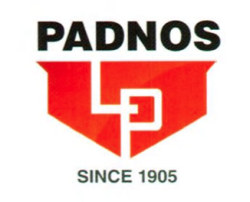 Louis Padnos Iron & Metal Company has recycled and processed metal, paper, and plastic scrap since its founding in 1905. Padnos was started in Holland, Michigan and now has facilities throughout the state. Currently, product diverters are used to sort scrap pieces of metal during the last stage of material sorting. Large items, including cars and appliances, are fed into a shredding machine. After these items are shredded into small pieces, ferrous material is removed magnetically and aluminum is removed using an eddy current. At this point, sensors detect any metal remaining in the scrap and signal the product diverter to remove these metal pieces from the material stream. By preventing this remaining metal scrap from being sent to a landfill, the diverter system is beneficial to the environment and Padnos’bottom line.
Louis Padnos Iron & Metal Company has recycled and processed metal, paper, and plastic scrap since its founding in 1905. Padnos was started in Holland, Michigan and now has facilities throughout the state. Currently, product diverters are used to sort scrap pieces of metal during the last stage of material sorting. Large items, including cars and appliances, are fed into a shredding machine. After these items are shredded into small pieces, ferrous material is removed magnetically and aluminum is removed using an eddy current. At this point, sensors detect any metal remaining in the scrap and signal the product diverter to remove these metal pieces from the material stream. By preventing this remaining metal scrap from being sent to a landfill, the diverter system is beneficial to the environment and Padnos’bottom line.
The existing design is difficult to manufacture. Each individual diverter is welded by hand and must be ground down to meet the spatial constraints of the sensors. The present configuration of the pin joints creates a problem with the assembly of the diverter because the tight tolerances of each pin must be met to maintain functionality.
The team modified this design of a high-speed, mechanical product diverter in order to reduce operating costs and increase recyclability for the Louis Padnos Iron & Metal Company. This design improves the manufacturability, reliability, and cost of each individual product diverter to be implemented into a large paddle-arm assembly that diverts metal products at the end of a conveyor belt system.
Louis Padnos Iron & Metal Company: Sensor Bar Alignment
 Louis Padnos Iron and Metal Co. is a leader in recycling and processing metal, paper, and plastic across the United States. Padnos uses a host of unique equipment to actively manage scrap for its clients. Relative to this project are material sorters that separate aluminum, iron, and other metals of value from discarded products. The effective implementation of these sorters prevents the loss of tons of valuable metal to the landfill.
Louis Padnos Iron and Metal Co. is a leader in recycling and processing metal, paper, and plastic across the United States. Padnos uses a host of unique equipment to actively manage scrap for its clients. Relative to this project are material sorters that separate aluminum, iron, and other metals of value from discarded products. The effective implementation of these sorters prevents the loss of tons of valuable metal to the landfill.
In Padnos’current recycling process, material to be sorted travels down a conveyor and is then detected by a sensor resulting in its diversion to a separate area. For proper operation, the design hinges on the fact that the set of sensors is precisely aligned with the mechanical diverters. The design team was tasked with finding a working solution to continuously monitor the alignment of the sensors with their corresponding mechanical diverters.
Many challenges were encountered while developing the sensor bar alignment device. Harsh operating conditions, coupled with the nature of the recycling industry, necessitated that the working solution be exceedingly robust and reliable. To face these challenges head-on, many potential solutions were considered. Out of these possibilities, the most promising design was identified and developed into an effective solution.
